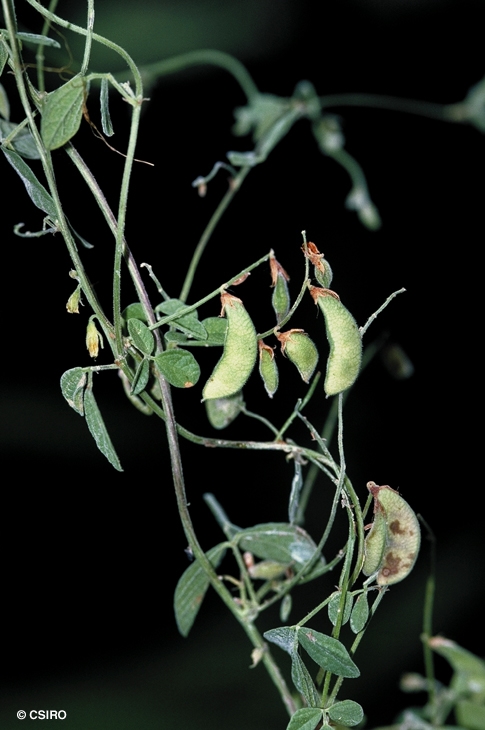Australian Tropical Rainforest Plants - Online edition
Rhynchosia minima (L.) DC.




Candolle, A.P. de (1825) Prodromus 2: 385.
Ryncho; Rhynchosia
A slender vine not exceeding a stem diameter of 2 cm.
Leaflet blades about 4.2-6 x 2.8-4 cm, middle leaflet stalk about 1.3-1.5 cm long, lateral leaflet stalks about 0.2 cm long. Leaflet blades with numerous brown or reddish glands on the lower surface. Compound leaf petiole about 3.5-4 cm long, grooved on the upper surface. Stipules about 3 mm long. Stipels filiform, about 1.5-2 mm long.
Flowers about 4-5 mm diam. Calyx tube about 1.3 mm long, lobes unequal in size, about 2.8-3.3 mm long, all calyx parts clothed in hairs and brown glands. Petals: standard about 7 mm long; keel about 7.5 mm long, longer than the wings. Stamens 10, the filaments of nine stamens fused to form a tube about 4.5-5.5 mm long, free part of the filaments about 1 mm long. One stamen free, filament about 6 mm long. Ovary elongated, flat, densely clothed in hairs and glands. Style somewhat twisted or bent, mainly glabrous, but hairy towards the base. Ovules two.
Pods usually curved, about 13 x 4 mm, outer surface clothed in short hairs and numerous globose surface glands. Each half of the pod twisted into a tight spiral after dehiscence. Seeds reniform, about 1.5 x 2 mm. Cotyledons about 1.2-1.5 mm long. Radicle about 0.6-1 mm long.
Features not available.
Occurs in WA, NT, CYP, NEQ, CEQ and southwards as far as central New South Wales. Also widespread through central Australia. Altitudinal range from near sea level to 350 m. Usually grows in open forest but also found in vine thicket and monsoon forest. Also occurs in Africa, Asia, Malesia and the Americas.
Often a palatable species when young, but strains probably vary in palatability. Not toxic to rats in laboratory tests. More salt-tolerant than most herbaceous legumes. Sensitive to flooding. Hacker (1990).





